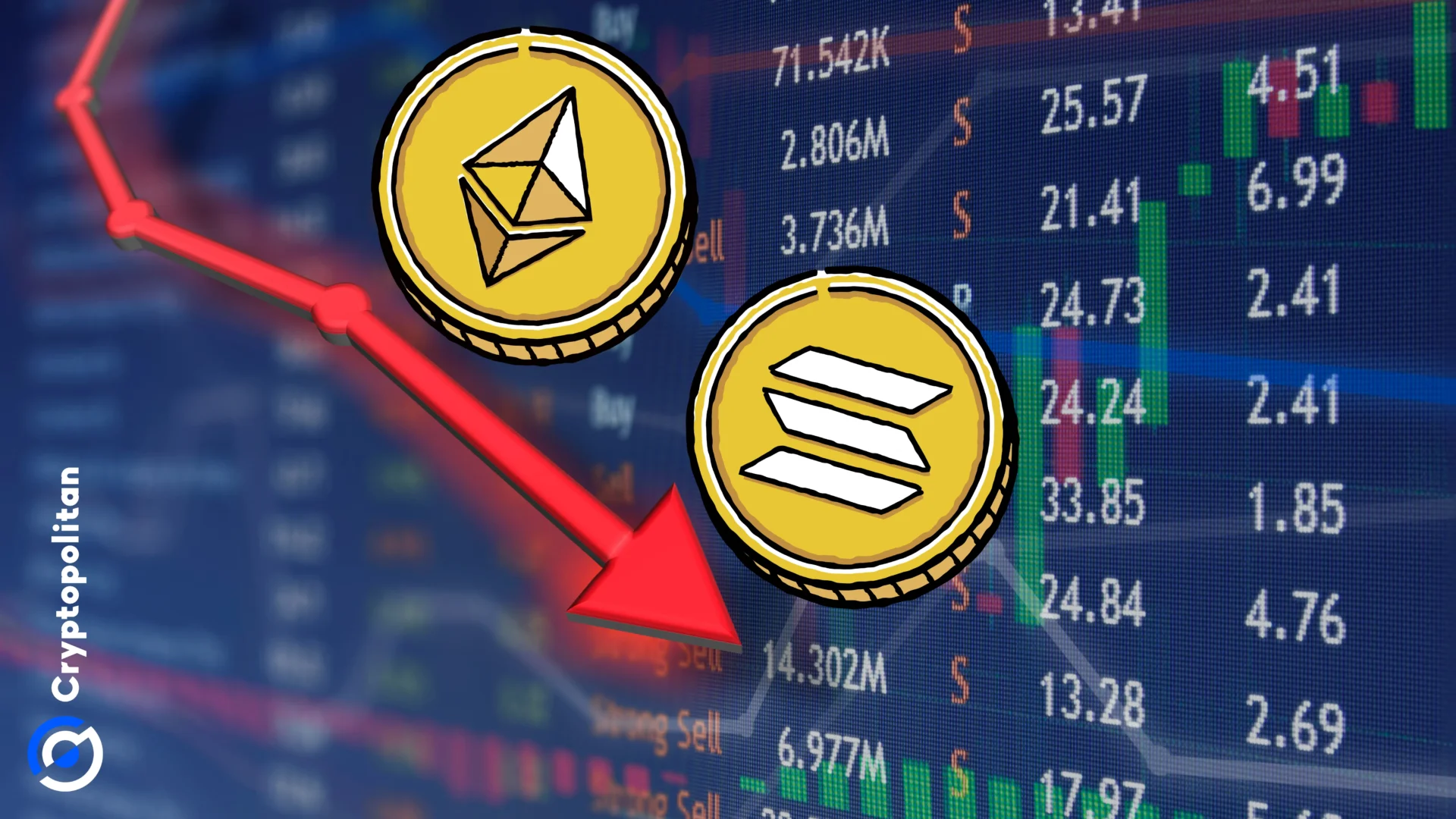Ethereum (ETH) and Solana (SOL) are still compared and seen as competitors. After the most recent market correction, ETH and SOL faced a similar downturn of 34% since the March market peak.
Ethereum (ETH) and Solana (SOL) fell at the same rate for the past month, accelerating the correction in September. On a year-to-date basis, SOL achieved more robust gains but also had a sharper downturn. Instead of breaking out and achieving four-digit valuations, SOL returned to a lower range,
ETH and SOL cannot diverge too far, as both chains reflect the same type of demand for DEX trading, NFT, memes and DeFi projects.
ETH remained flat, gradually deflating in dollar terms and against Bitcoin (BTC). The expected volatility and a downward trend for all markets in September affected both assets, causing them to even crash on the same day.
The expectation was for ETH to deflate faster, as selling accelerated and whale accumulation stalled. However, activity was stagnating for Solana (SOL) as well. Even Pump.fun action could not compensate for the overall stagnant market. The slide of Bitcoin (BTC) also affected enthusiasm about the two leading blue chip tokens. ETH and SOL continued to slide in 2024, not reaching their predicted price records. The lack of an altcoin bull market in 2024 further affected even the leading tokens.
SOL fell to $128.96, while ETH held the $2,300 level, though with bearish sentiments. Further price drops cause predictions of SOL at $110 or as low as $90, while ETH may dip under $2,000.
Both assets are down around 34% since the March peak, though the drawdown only accelerated in the past couple of weeks. At this point, SOL has a 3.11% market dominance, while ETH market dominance shrank to 14.2%. Other altcoins also fell in a way similar to ETH, losing ground against BTC.
The most recent sentiment metric shows SOL crowd money is bullish, but smart money is more cautious. The latest sentiment for Ethereum is more bullish for both crowd money and smart whales.
ETH and SOL saw user outflows
Even before the price drawdown, the Ethereum and Solana chains saw an outflow of users. The trend in lowered daily active wallets started off in mid-August, following a deeper market crash. The lowered user count also translated into fewer transactions for both chains.
For Solana, this was a time of peak meme token activity, which had a downturn since August 13. For Ethereum, the outflow of users reflected a shift of activity and liquidity to L2 protocols.
The drawdown of the two leading L1 protocols raised questions on which network produced more value for a given expense. Solana managed to draw in traffic through high-speed transactions, suitable for DEX trading and meme token sniping. But when it comes to generating value, Ethereum remains a leader in terms of value per dollar spent.
Solana requires more than $82M in incentives each week, while Ethereum fell to $44.15M with lower gas fees.
Due to lowered activity, Solana produced $1.09M reported revenue in the past week, while Ethereum logged $6.14M. Overall, Solana incentives are still more expensive, which also means the network is more inflationary. Solana scheduled inflation remains above 5%, while Ethereum inflation inched down from a peak of 0.74% annualized to 0.68%.
Overall, day to day operations of Solana require more incentives to produce $1 of revenues compared to Ethereum. Additionally, some of the most active Solana apps are not sharing their revenues, and are in fact selling the SOL received, as in the case of Pump.fun. Ethereum carries some of the key DEX and DeFi apps, which share revenues with their users, liquidity providers, and lenders.
The recent drop in both Solana and Ethereum performance restarted the discussion on which network would gain primacy. Ethereum still carries more than $43B in value locked, while Solana carries $4.6B. The correction for SOL also suggests the network will probably not replace ETH and is not undervalued, but instead behaves in a similar way, though more volatile. The biggest advantage of SOL was its recovery from lows of $9, which gave a chance for risk takers to gain more compared to holding ETH.





